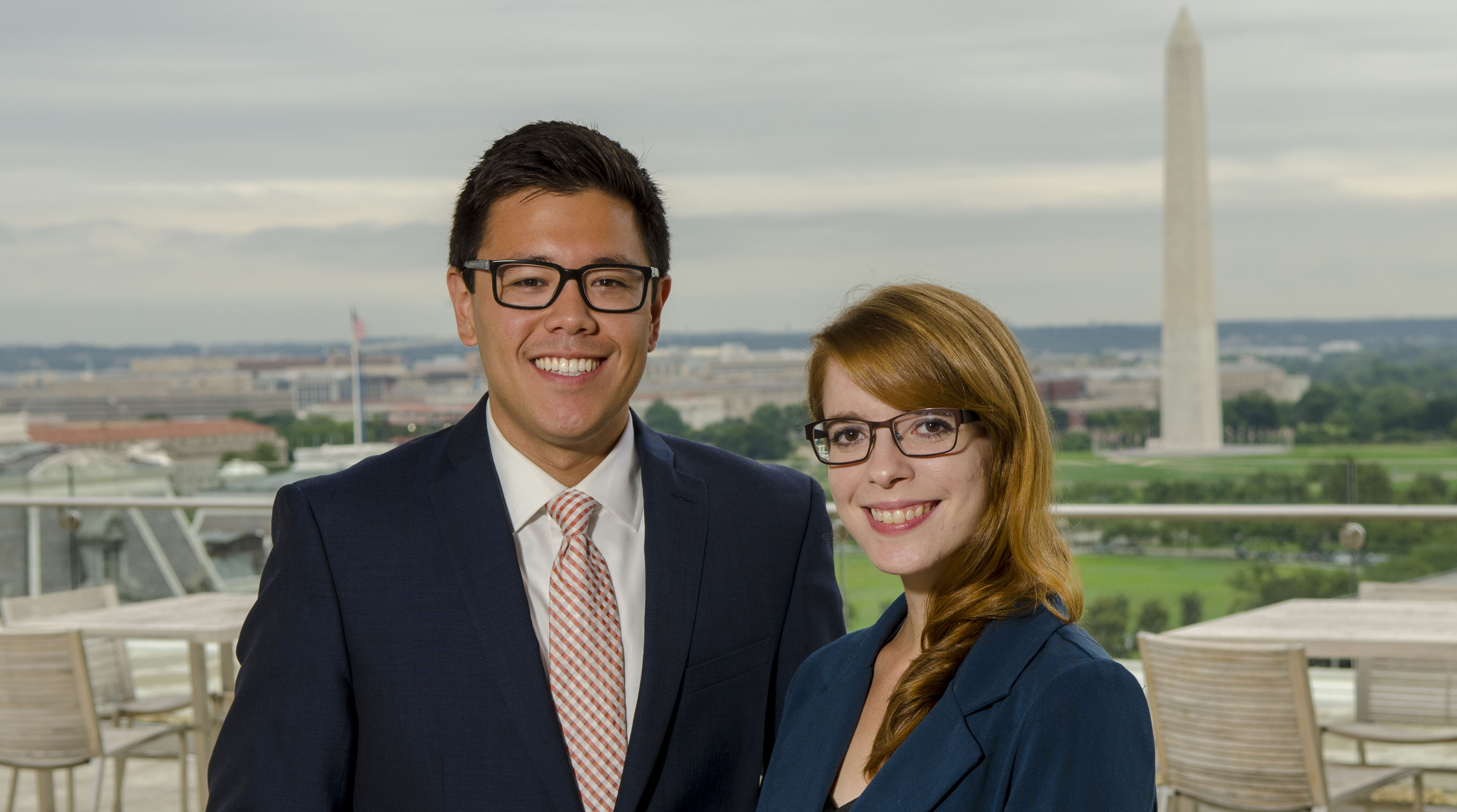Summer is when most Environmental and Occupational Health MPH students apply their academic knowledge in a real-world professional setting to complete their practicum requirement. Our students have an unparalleled range of opportunities, thanks to our location in the nation’s capital and GW’s extensive network of connections at public health organizations throughout the Washington, D.C., metropolitan area. For some students, the practice work turns into a long-term job.
The Milken Institute School of Public Health’s ever-growing network enables students to partner with the top local, national and international health organizations. Not every EOH MPH student completes his or her practicum in Washington, D.C., or nearby Maryland and Virginia, but there are a wealth of opportunities nearby. GW’s recent number-one ranking for student internships testify to our success in connecting students with outstanding practice experiences.
“The rich opportunities in and around Washington, DC, for students to complete their practicum requirement is one of the best things about our Environmental and Occupational Health program,” says Associate Professor Peter LaPuma, who directs practica experiences for EOH’s Environmental Health Science and Policy program. “There is a very high density of federal, consulting and advocacy environmental and occupational organizations around GW. We have relationships with a wide range of organizations, and I always have more mentors at these organizations wanting to work with our students than I have students to give. Students often find internships on their own, too. Best of all, these practica and internships can often turn into long-term jobs,” he adds.
The wide range of internationally focused public health organizations headquartered in Washington also aids students in the Global Environmental Health program in finding exceptional practicum experiences. Associate Professor Sabrina McCormick, who directs the program’s practica experiences, says: “The opportunity to apply academic knowledge and theory in real-world professional public health settings has transformed the lives of many of our
students.”
The places where EOH students have recently completed practica include numerous offices within the U.S Environmental Protection Agency, such as studying plastics in water at the Office of Research and Development; helping to draft a fact sheet on harmful algal blooms at the Office of Water; and participating in particulate matter research through the agency’s Pathways Internship Program. At the Pan American Health Organization, a recent student worked on mercury guidelines. Another student completed a practicum at the Partners of the Americas Agriculture and Food Security Unit monitoring technical assistance intended to increase sustainability in developing and transitional countries.
A number of students have completed practica at the U.S. Global Change Research Program working on projects including a recent National Climate Assessment. (This includes the two students shown in the photo above, Mark Shimamoto (who worked at USGCRP during the Obama administration) and Amanda McQueen, who were photographed on the USGCRP building's roof). At the U.S. Green Building Council, a student helped amass data on how green buildings promote health. A student collected data on the impacts of using different kinds of cookstoves in Mozambique for a World Bank project. At Population Services International, a student compiled a water-quality toolkit to help field workers monitor whether communities are using the water-quality interventions the organization promotes.
This is but a small sample of the dozens of places where our students have completed their practica. Students have also recently gained real-world experience at the Department of Health and Human Services, National Institutes of Health, Occupational Safety and Health Administration, Peace Corps, U.S. Agency for International Development, United Nations Foundation, and the White House Office of Science and Technology Policy—and many others.
LaPuma says that he often finds out about new practicum sites through our students. The EOH department’s network just keeps growing because our students are received so enthusiastically, LaPuma says. GW always sends out a questionnaire to mentors when a student finishes their practicum experience asking if the mentors are willing to continue working with GW students in the future. “In seven years and 130 students, I have never had anyone say no. It’s often an enthusiastic ‘absolutely,'" LaPuma says.


